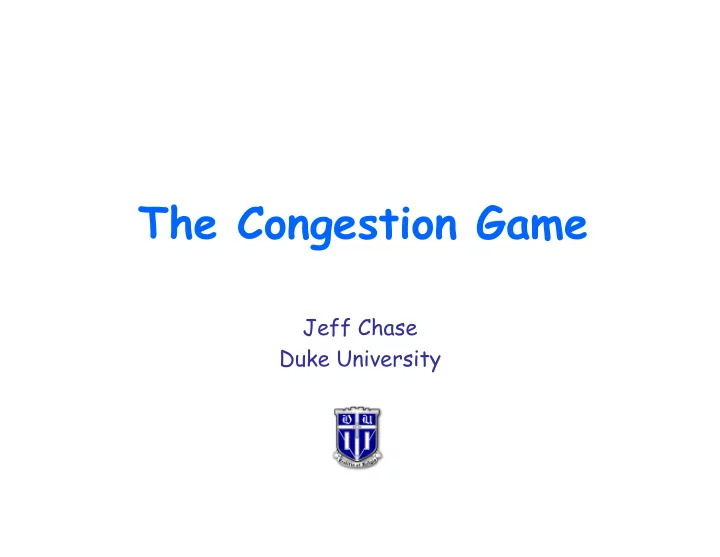

The Congestion Game Jeff Chase Duke University
Review • What are the limits to throughput for TCP?
Limits to Throughput • Host limitations/overhead • Flow limits: how fast can app can produce or consume data? • Wire speed • Congestion limits available bandwidth. • Efficiency – Leaving network idle – Sending duplicate data – High ratio of control to data – What causes loss of efficiency?
TCP Efficiency • Retransmission timer – Underestimate RTT causes unnecessary retrans – Overestimate RTT leaves bandwidth idle • Window sizes – Too small? Leaves bandwidth idle. • Congestion window estimation – Slow start – Sawtooth – Must be conservative…but not too conservative • Not conservative enough? Congestion collapse.
Sending Too Fast • What happens if the sender goes too fast?
Sending Too Fast • Overflow at receiver? Receiver drops packet. • Overflow network link? NIC drops packet. • Overflow router? Router drops packet. • Faster than fair share? – Pro: you win – Con: somebody else loses – TCP is a game
Max-Min Fairness Criteria • “Fair sharing” • But flows have differing demands… • Flows demanding less than their share get as much as they need. • Flows demanding more than their share split the surplus. • Generalizes to proportional sharing
Trust and Rate Control • Is gaming TCP a security problem? • How should the network deal with this? • Whose responsibility is it? • What incentive does anyone have to play the game by the rules? – Good Samaritan? – Rodney King: “Can’t we all just get along?” – Judge Judy? – Adam Smith?
TCP Game (RFC 2581) • Ack each segment with highest seqnum received. • Acks drive actions at sender: self-clocking • Below ssthresh, double window on each ack. – “Slow start” • Above ssthresh, increment window on each ack. – Additive increase == “congestion avoidance” • Loss? Congestion! Cut window in half. – Multiplicative decrease == “congestion control” • Triple dup ack? Loss! “Fast retransmit”. (Tahoe) • After fast-retransmit loss, back to ssthresh, every ack adds to 1/cwnd to window, even dups. – “Fast recovery” (Reno)
Savage TCP (Daytona) • Attack: “Ack early, ack often”. – Three variations on a theme. – Ack early hides congestion loss. – “Big ack attack” • Defense: – Don’t make hidden assumptions. • One ack per segment? Uh uh. – Remove incentives to cheat. – Trust but verify. • Nonces and cumulative nonces.
Recommend
More recommend